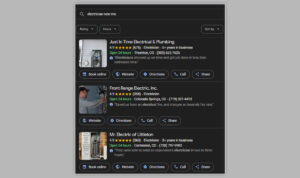In the world of affiliate marketing, creating great content is key. But many beginners wonder: should they focus on making lots of content or just a few high-quality pieces?
This article will explore why quality matters, how to create top-notch content, and how to find the right balance between quality and quantity.
Let’s dive in and discover the best ways to succeed in affiliate marketing.
-
Table of Contents
Key Takeaways
Understanding the Basics of Beginner Affiliate Marketing
What is Affiliate Marketing?
Why Start with Affiliate Marketing?
Beginner Affiliate: Common Misconceptions
The Importance of Quality Content in Affiliate Marketing
Building Trust with Your Audience
Enhancing Shareability
Protecting Against Click Fraud
How to Create High-Quality Affiliate Content
Balancing Quality and Quantity in Content Creation
Setting Realistic Goals
Prioritizing Content Quality
Finding the Right Posting Frequency
Tools and Resources for Beginner Affiliates
Content Management Systems and Hub Builder
SEO Tools
Analytics Platforms
Common Pitfalls to Avoid in Affiliate Marketing
Overloading on Quantity
Neglecting Audience Needs
Ignoring SEO Best Practices
Measuring the Success of Your Affiliate Content
Key Performance Indicators
Analyzing Traffic and Engagement
Adjusting Strategies Based on Data
Building a Sustainable Content Strategy
Long-Term Planning
Adapting to Market Changes
Maintaining Consistency
The Role of Social Media in Promoting Affiliate Content
Future Trends in Affiliate Marketing
Shifts in Consumer Behavior
Preparing for Changes
Conclusion
Frequently Asked Questions
What is affiliate marketing?
Why should I start with affiliate marketing?
What are some common misconceptions about affiliate marketing?
How does quality content help in affiliate marketing?
How can I create high-quality affiliate content?
How do I balance quality and quantity in content creation?
What tools can help me as a beginner affiliate?
What are some common pitfalls to avoid in affiliate marketing?
Key Takeaways
-
Quality content builds trust and keeps readers coming back.
-
High-quality content is more likely to be shared and go viral.
-
Good content helps protect against click fraud.
-
Understanding your audience is crucial for creating relevant content.
-
Balancing quality and quantity is key to a successful content strategy.

Understanding the Basics of Beginner Affiliate Marketing
What is Affiliate Marketing?
Affiliate marketing is a well-known way to earn money by promoting other people’s products. You get a commission for every sale made through your referral link.
It’s a great way for beginners to start making money online. But it requires a strategic approach to ensure that your efforts lead to steady growth and consistent income.
Why Start with Affiliate Marketing?
Starting with affiliate marketing is smart because it requires low investment and minimal risk. You don’t need to create your own products.
Instead, you can focus on promoting existing ones. Plus, you can join communities like the FractalMax private VIP community to get cutting edge strategies, tips and much more!
Beginner Affiliate: Common Misconceptions
Many people think affiliate marketing is a quick way to get rich. It’s not the truth, it takes time and effort to build a successful affiliate business.
Another misconception is that you need a large audience to start. Even beginners can succeed with a small, engaged audience.

The Importance of Quality Content in Affiliate Marketing
Building Trust with Your Audience
Creating high-quality content is essential for building trust with your audience. When you provide valuable and well-researched information, your readers are more likely to see you as an authority in your niche.
Trust is the foundation of any successful affiliate marketing strategy. If your audience trusts you, they are more likely to follow your recommendations and make purchases through your affiliate links.
Enhancing Shareability
Quality content is more likely to be shared by your readers. When your content is informative, engaging, and valuable, people will want to share it with their friends and followers.
This increases your reach and can lead to more traffic and potential sales.
Remember, high-quality content is the key to going viral.

Protecting Against Click Fraud
High-quality content can also help protect against click fraud. When your content is genuine and valuable, it attracts real, interested readers rather than bots or fraudulent clicks.
This ensures that your affiliate marketing efforts are effective and that you are getting the most out of your campaigns.
How to Create High-Quality Affiliate Content
Creating high-quality affiliate content is essential for building trust and driving conversions.
Here are some steps to help you get started:
Balancing Quality and Quantity in Content Creation
Creating content is all about balance. It’s tempting to produce a lot of content to stay visible, but this can lead to repetitive and uninteresting pieces that turn off your readers.
Instead, focus on publishing high-quality content, even if it’s less often.
This way, you can build a loyal audience and attract real leads.
On the flip side, putting out high-quality content consistently, even if it’s not as often, can help you build a loyal group of readers and bring in real leads.
The ultimate solution would be to push out quantity while maintaining quality in your content.
This is really not easy, I’m telling from experience. I’ve been struggling a lot to publish quality content regularly.
It’s possible and can be achieved by planning your content strategy carefully, setting clear goals, and ensuring each piece of content aligns with your audience’s interests and needs.
Be patient with yourself!
Also at the beginning stay topic focused to ensure that you establish a strong foundation.

Setting Realistic Goals
Setting realistic goals is crucial for balancing quality and quantity. It’s better to have a few well-crafted pieces than many mediocre ones.
Start by planning your content calendar with achievable targets. This way, you can focus on creating valuable content without feeling overwhelmed.
Prioritizing Content Quality
Quality content is the most important thing. It’s more valuable than sticking to a strict schedule of posting often. While quantity is also important, it should not come at the expense of quality.
Don’t lower your standards just to meet a deadline, like posting a blog every Monday.
Finding the Right Posting Frequency
Finding the right posting frequency is essential. You don’t need to post every day to be effective. Instead, find a rhythm that works for you and your audience.
This could be once a week or bi-weekly.
The key is consistency and maintaining the quality of your content.

Secure your spot for the free training to learn how to launch your own affiliate business in 7 days. Turnkey system.
Tools and Resources for Beginner Affiliates
Content Management Systems and Hub Builder
To start with affiliate marketing, you need a good content management system (CMS).
A CMS helps you create, manage, and modify content on your website without needing technical skills.
WordPress is a popular choice for affiliate marketing because it’s user-friendly and offers a wide range of plugins to enhance functionality.
However, maintaining a WordPress site can be challenging due to frequent updates, potential security vulnerabilities, and the need to manage multiple plugins, which can sometimes cause compatibility issues.

I don’t recommend it for affiliates marketers like you!
For building a website, platforms like Squarespace or Wix are a good start. These platforms offer easy-to-use drag-and-drop interfaces and built-in features, reducing the need for plugins.
If you’re looking for a simpler and more effective alternative, it’s time to build your Hub. Learn how you can launch your own affiliate marketing business in 7 days, even if you’re starting from zero.
SEO Tools
Search Engine Optimization (SEO) tools are essential for getting your content seen. These tools help you find the right keywords, analyze your competitors, and track your rankings.
Some popular SEO tools include Diib, Ahrefs, SEMrush, and Moz. Using these tools can help you turn traffic into sales.
Analytics Platforms
Analytics platforms help you understand how your content is performing.
Google Analytics is a free tool that provides insights into your website traffic, user behavior, and conversion rates.
By analyzing this data, you can learn affiliate marketing strategies for beginners to improve your content and increase your earnings.

Common Pitfalls to Avoid in Affiliate Marketing
Overloading on Quantity
Creating a lot of content quickly might seem like a good idea, but it can hurt your efforts. Quality always beats quantity.
Focus on making each piece of content valuable and informative for your audience.
Neglecting Audience Needs
If you don’t pay attention to what your audience wants, they won’t stick around. Make sure to research and understand their needs and preferences.
This will help you create content that resonates with them.
Here are questions that you can ask yourself to better understand your audience’s needs and preferences:
Who is my target audience?
What are their demographics, interests, and behaviors?
How can I define my audience in terms of age, gender, location, and interests?
What problems or challenges does my audience face?
What are the common pain points or issues they encounter?
How can my content or products provide solutions to these problems?
What type of content does my audience engage with most?
Which formats do they prefer: blog posts, videos, infographics, or podcasts?
What topics generate the most engagement and feedback from them?
What questions are my audience asking?
What are the most frequently asked questions in my niche?
How can I address these questions with my content?
How does my audience consume content?
Which platforms do they use most frequently to find and consume content?
How can I optimize my content for these platforms?
What motivates my audience?
What values or beliefs drive their decision-making process?
How can I align my content with their motivations and aspirations?
What feedback have I received from my audience?
What are the common themes in the feedback and comments I receive?
How can I use this feedback to improve my content strategy?
How can I engage with my audience directly?
What methods can I use to interact with my audience and gather insights?
How can I incorporate their feedback into my content planning?
Ignoring SEO Best Practices
SEO is super important for making sure people find your content. If you skip it, your content might get lost.
Use keywords smartly, write clear meta descriptions, and make sure your site works well on phones.

Measuring the Success of Your Affiliate Content
Key Performance Indicators
To know if your affiliate marketing is working, you need to track key performance indicators (KPIs).
These are numbers that show how well your content is doing.
Some important KPIs include click-through rates, conversion rates, and average order value.
When you keep an eye on these, you can see what’s working and what needs improvement.
Analyzing Traffic and Engagement
Understanding where your traffic comes from and how people interact with your content is crucial.
Use tools like Google Analytics to see which pages get the most visits and which links get the most clicks.
This helps you know what your followers are responding to and where to focus your efforts.
Adjusting Strategies Based on Data
Once you have the data, use it to make better decisions. If a certain type of content is doing well, create more of it. If something isn’t working, try a different approach.
Regularly updating your strategy based on what the numbers tell you is key to long-term success.
Building a Sustainable Content Strategy
Long-Term Planning
Creating irresistible content is the cornerstone of audience-building. Firstly, ensure your content is relevant, engaging, and provides value.
Be sure to include a mix of content types, such as blog posts, videos, infographics, and podcasts, to cater to a variety of content consumption preferences.
Consistency is key in content creation; regular updates with fresh content will keep your audience coming back for more.

Adapting to Market Changes
Creating content is a balancing act. You might feel the need to produce content often to stay visible, but this can lead to repetitive or irrelevant pieces that turn off readers and hurt lead generation.
Instead, focus on publishing high-quality content, even if it’s less frequent. This approach can build a loyal audience and attract real leads.
Maintaining Consistency
If managing content across multiple platforms feels overwhelming, consider taking it one step at a time.
Start by establishing a strong presence on one or two platforms before expanding to others.
Is there a specific platform or content format that drives good reach? Might be worth prioritizing what’s trending.
And keep in mind that in today’s content-saturated world, quality matters more than quantity. Your goal is to position yourself as an industry expert and gain your audience’s trust.
Don’t just focus on creating lots of blog posts. For long-term success, make sure your content is high-quality and truly helpful for your audience.
Focus on your topic, do your own research, and share unique insights that others don’t offer.
Take the time to understand what your audience really needs. Be open to covering unique topics, create in-depth content, optimize without using spammy tactics, and encourage your readers to take action.
What do you do to make your blog stand out? Take the time to write it down.

The Role of Social Media in Promoting Affiliate Content
Social media is a great way to promote your affiliate content. People use social media to connect with others, not just to buy things.
Instead of posting your affiliate links directly on Facebook or Twitter, try sharing something valuable that includes your affiliate link.
This could be a video, an interesting blog post, or a sign-up link for a webinar.
Future Trends in Affiliate Marketing
Shifts in Consumer Behavior
Keeping up with industry trends is crucial. The market is always changing, and understanding these shifts helps you align your marketing strategies.
This ensures your efforts stay effective and relevant. It also helps you provide valuable content to your audience, making you a trusted source of information.
Preparing for Changes
Affiliate marketing is not slowing down. In fact, it’s expected to grow significantly. New innovations like AI and the rise of retail media networks are creating more opportunities for content publishers to monetize their influence.
Affiliate marketing is evolving fast, and you don’t want to miss out on the latest trends. From new strategies to innovative tools, the future is bright for those ready to adapt.
Want to stay ahead of the curve? Visit our website to learn more and secure your spot in our free training today! You’ll learn about the secret model top affiliate entrepreneurs are using.
Conclusion
In the end, the debate between quality and quantity in affiliate content creation leans heavily towards quality.
High-quality content not only attracts and keeps readers but also builds trust and credibility. While it might be tempting to produce a lot of content quickly, it’s the well-crafted, valuable pieces that truly make a difference.
So, focus on creating content that speaks to your audience and meets their needs. Remember, it’s better to have a few great posts than many mediocre ones.
Quality content is the key to successful affiliate marketing.
Frequently Asked Questions
What is affiliate marketing?
Affiliate marketing is when you promote other people’s products and earn a commission for each sale made through your unique link.
Why should I start with affiliate marketing?
Affiliate marketing is a good way to make money online with low startup costs and the potential to earn passive income.
What are some common misconceptions about affiliate marketing?
Some people think it’s a get-rich-quick scheme or that you need a huge audience to succeed, but that’s not true.
How does quality content help in affiliate marketing?
Quality content builds trust with your audience, makes your content more shareable, and helps protect against click fraud.
How can I create high-quality affiliate content?
To create high-quality content, research your audience, write catchy headlines, and use visuals and media to make your content engaging.
How do I balance quality and quantity in content creation?
Set realistic goals, focus on quality over quantity, and find a posting frequency that works for you without sacrificing content quality.
What tools can help me as a beginner affiliate?
Content management systems, SEO tools, and analytics platforms can help you manage and improve your affiliate marketing efforts.
What are some common pitfalls to avoid in affiliate marketing?
Avoid focusing too much on quantity, neglecting your audience’s needs, and ignoring SEO best practices.
Source: fractalmax.agency



